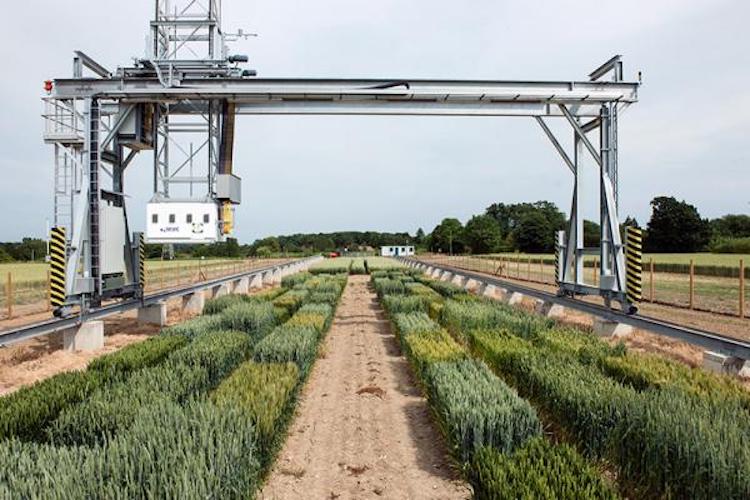
Truly gigantic farm robot as big as a football field being tested in Arizona desert
A colossally humungous robot that looks at least as big as a football field has been unveiled by a group of scientists who clearly understand scale. (See video below.)
Called the “Field Scanalyzer”, shown in dazzling pictures and video on the Wall Street Journal website, the totally titanic machine is described as “an automated robotic field phenotyping platform for detailed crop monitoring”.
Phenotyping is the process of predicting a crop’s phenotype – the observable physical properties of an organism – using only genetic information collected from genotyping or DNA sequencing.
In other words, the robot can tell whether an organism is the crop that should be there or if it’s an alien, like a weed or bug – and, therefore, whether it should be eliminated or not. And it can provide information about the quality of the crop that is being grown.
Phenotyping has emerged as a key technology in what’s increasingly being called “precision agriculture”, which just means farming using new technologies such as robotics, cameras and vast arrays of sensors that collect data through an internet of things network spread out all over fields, and drones, of course, for tasks such as monitoring or precision irrigation or weed-killing.
The Field Scanalyzer is currently being tested in the Arizona desert, and the Wall Street Journal says the machine is currently sending 10 terabytes of data per day to computers in Missouri and Illinois.
Analyzing that amount of data is only possible with artificial intelligence systems, and data scientists at George Washington University and St Louis University are using machine-learning and deep-learning algorithms to analyze and draw conclusions about the plants.
Although many companies are developing robotics, automation and AI technologies for agriculture, the Field Scanalyzer was initially funded by the US government.
And at 70 feet tall, 92 feet wide, and 1,200 feet long, the Field Scanalyzer is the world’s largest robot, say its inventors.
In a paper, Rothamsted University researchers Nicola Virlet, Pourla Sadeghi Tehran, Malcolm Hawkesford, and Kasra Sabermanesh, explain the thinking behind their Field Scanalyzer.
“Current approaches to field phenotyping are laborious or permit the use of only a few sensors at a time,” they write.
“In an effort to overcome this, a fully automated robotic field phenotyping platform with a dedicated sensor array that may be accurately positioned in three dimensions and mounted on fixed rails has been established, to facilitate continual and high-throughput monitoring of crop performance.
“Employed sensors comprise of high-resolution visible, chlorophyll fluorescence and thermal infrared cameras, two hyperspectral imagers and dual 3D laser scanners.
“The sensor array facilitates specific growth measurements and identification of key growth stages with dense temporal and spectral resolution.
“Together, this platform produces a detailed description of canopy development across the crops entire lifecycle, with a high-degree of accuracy and reproducibility.”
The Wall Street Journal reports that the Field Scanalyzer, which uses 3D laser scanners, is currently inspecting two acres of land where crops including lettuce and wheat are growing. The machine is monitoring things such as temperature, shape and hue, and even the “angle of each leaf”.
